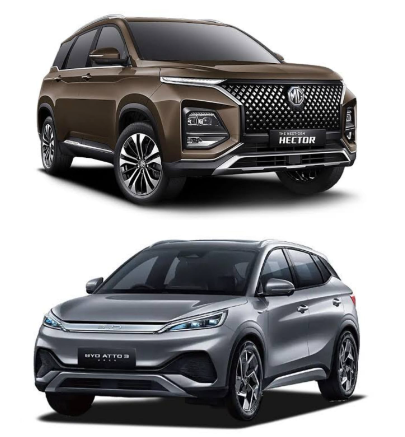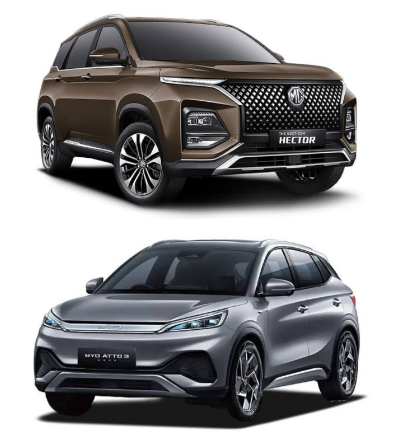
New Delhi: As India and China attempt to sort out the border issue and bury the hatchet in the process, it remains to be seen what impact this could have particularly when it comes to fresh investments in the automobile space.
When the skirmish along the border first broke out in 2020, one of the most significant casualties was Great Wall Motors which had announced with much fanfare earlier that it had bought out the General Motors plant near Pune. This was followed by an impressive display of its SUV lineup at the Delhi Auto Expo and the stage was set for the next entry of a Chinese automaker after SAIC Motor Corp which had front faced its India journey with the MG brand.
In this cheerful backdrop was the dreaded overhanging of Covid which was then termed the Wuhan virus and was already wreaking havoc in parts of Europe and China. A few weeks after the Auto Expo came the lockdown which brought the Indian economy to a standstill but worse was to follow when the Chinese army decided to play the aggressor on the Ladakh side.
Over the last four years since this happened, the relations between the two countries has only deteriorated even while China has resurfaced as India’s largest trading partner in recent times. Even while the Centre has sounded out the clarion call of Atmanirbhar Bharat — roughly translating into self-reliance — the actual reality is something else borne out by the trade statistics where India has imported over USD 100 billion from China last fiscal compared to a mere USD 17 billion in exports from our side.
Rewind to Great Wall Motors
The last four years have also seen Great Wall Motors finally shelve its proposal of acquiring the GM facility which is now in the portfolio of Hyundai Motor India. The Chinese SUV brand waited for nearly two years but when it was clear that the Centre was not going to give its go-ahead, it called it a day and decided to look at Brazil and Thailand instead as potential markets instead.
Likewise, Changan Automobile was as keen on entering India but the Chinese army’s hectoring tactics put paid to these plans. The company was on the lookout for locations in Tamil Nadu, Andhra Pradesh and Telangana with reports even suggesting that it was exploring the possibility of getting a foothold into the Ford plant near Chennai. Eventually, it decided to drop everything and focus on ASEAN when it was absolutely clear that there was no love lost between India and China.
So what does the latest rapprochement round at the BRICS summit in Russia indicate? As a top industry official told ETAuto, “It would be naive to assume that everything is hunky-dory all over again. China is not going to make things easy for India and will attempt to throw its weight all over again.” Doubtless, the Centre would be aware of this and, therefore, take one step at a time instead of getting into a premature celebratory mood.
What cannot be denied, however, is that China will see India as a potentially huge market for its electric vehicles where it is presently the monarch of all it surveys. There is just no rival from either the US or Europe to take on top Chinese brands like BYD (which incidentally has a facility near Chennai) and many others which are virtually roaring in the EV space.
BYD on a roll
The heady mix of top-class features at competitive price tags was irresistible to potential buyers. BYD has now soared to the top spot in China and overtaken traditionally strong players like Volkswagen and General Motors which were having a field day till then with their ICE (internal combustion engine) offerings. But China wanted more and it was now time for its automakers to pursue new geographies with greater aggression.
Both Europe and the US were shaken badly when China decided to go global with its range of EV brands and wasted little time in imposing hefty tariffs to prevent easy entry. Some European carmakers cautioned their governments that this would be counterproductive especially when they were betting big on a large market and there could be severe retaliation in the process. Ironically, some of the smaller countries in Europe have laid down the red carpet for Chinese investments in EVs which has only brought out the political divide within the EU.
Undeterred, Chinese EV makers are now going flat out with their global plans and have targeted ASEAN and Latin America as additional bases. India is out of bounds for now and here is where it will be interesting to see how things pan out in the coming months. Industry sources insist that the Centre will be as wary as before and will not make entry barriers easy unless a whole lot of conditions are fulfilled.
“We believe that there will be strict rules relating to optimal use of the local supplier base in India instead of just letting Chinese imports get out of hand completely. The Government may also insists on partnerships with Indian companies,” they say.
Some investment proposals may get the green signal as in the case of BYD whose initial plans were turned down. The company is keen on growing its electric range in India and has already made a reasonable start with the Atto 3, eMax 7 and Seal. However, the big numbers can only come when manufacturing is ramped up for which fresh investments are needed. BYD is ready and it now remains to be seen if the Centre is as willing to support this effort.
Local partnerships for India
SAIC has already begun the first phase of its ‘Indianisation’ effort at MG by roping in the JSW group as an ally. This was the only way it could contemplate further investments especially when it was crystal clear that it could not do this on its own. BYD, likewise, may need to zero in on a suitable partner for its next stage of growth and speculation is already rife in the market that this could be the Adanis where the fusion of new energy requirements and EV manufacturing will work out well.
These are early days yet and the floodgates are not going to open in a hurry for Chinese investments in EVs. Local manufacturers will also put their point of view across to the Centre that they need to be insulated from any price wars happening vis-a-vis the Chinese brands. After all, the likes of Tata Motors, Mahindra & Mahindra, Hyundai and JSW MG have their own plans in place for which investments have been made.
The latest Economic Survey had clearly indicated that it made sense to invite Chinese investments simply because India could not afford to be isolated from the global supply chain. The reasoning was that the goods could be produced here and then exported which then could be a win-win situation for everyone concerned. However, some voices within the Government made it clear that this would not happen — but all this was before the BRICS summit and the announcement of “friendlier ties”.
A top CEO of an auto component company had recently told this writer that from an auto sector perspective, there is a geopolitical issue with China which “we fully acknowledge and support”. He also referred to the emergence of a “global south” which India needed to take advantage of and yet be careful on how it engaged with other countries, including China.
Acknowledging reality
“But when I look at it purely from a business and economics point of view, we need to respect that China is the largest producer and market in the world and, from a new technology of view, is way ahead. If it is not geopolitical or a security-sensitive issue, you should engage with China on your own terms in certain areas to at least help flourish the ecosystem globally, Eventually, you want to have access to the globally competitive value chain,” said the CEO.
According to him, there were a huge number of startups in India which would also have a role to play in this direction. “”We need to use this entrepreneurial spirit to fast track with some of these more established economies in the automotive sector…try and imbibe that technology and build upon it for the Indian market,” he explained.
“For us, so long as FDI is supporting Indian localised manufacturing and you tick the right boxes in terms of zero security risk, there has to be some engagement (with China). India is also a strongly emerging growth market and China cannot afford to lose sight of that,” signed off the CEO.
To learn more about the electric vehicle ecosystem and meet the key industry leaders, click here.






